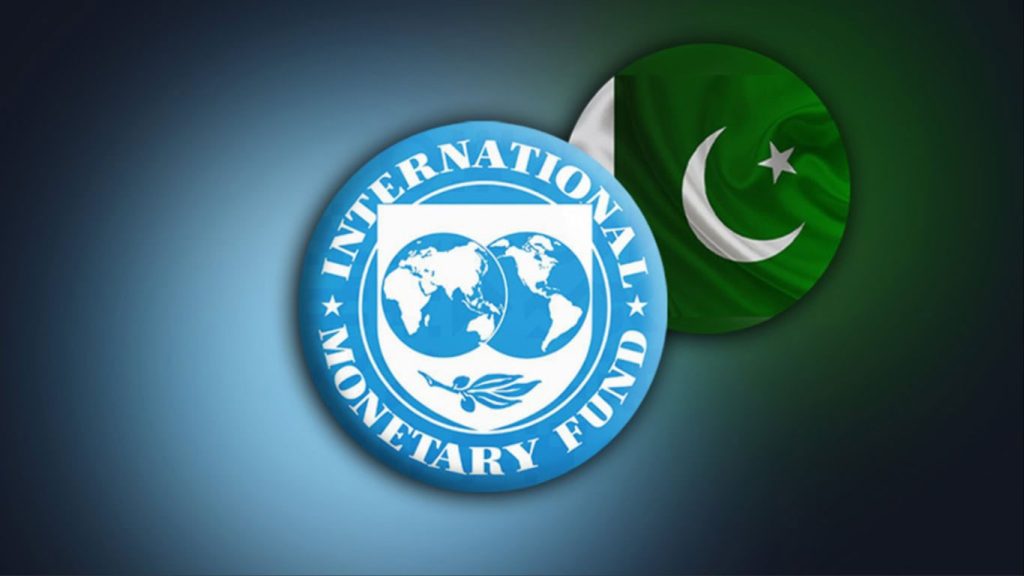The International Monetary Fund (IMF) has revised Pakistan’s economic growth forecast for fiscal year 2025-26, predicting a 3.6% expansion, notably lower than the government’s official target of 4.2%. This divergence raises questions about the realism of the government’s growth ambitions in the face of persistent structural, fiscal, and external challenges.
The IMF’s updated projection reflects a cautious yet pragmatic assessment of Pakistan’s economy as it continues to navigate through the complexities of inflation control, revenue generation, debt sustainability, and macroeconomic stabilization.
Government vs IMF: Growth Outlook at Odds
The government of Pakistan has set a GDP growth target of 4.2% for FY2025-26, citing expected improvements in agriculture, industrial output, and services. However, the IMF’s projection of 3.6% indicates a less optimistic outlook, rooted in the country’s ongoing fiscal discipline, tight monetary conditions, and reform implementation challenges.
| Indicator | Govt Target | IMF Projection |
|---|---|---|
| FY2025-26 GDP Growth | 4.2% | 3.6% |
This mismatch highlights a recurring trend: while the government banks on recovery through budgetary incentives and investment-friendly policies, the IMF emphasizes sustained reform, tax broadening, and strict expenditure management as prerequisites for growth.
What’s Holding Back Growth?
1. Fiscal Tightening Measures
To comply with IMF agreements, the government has adopted a contractionary fiscal policy, limiting public spending and subsidies. While these measures are necessary for fiscal discipline, they simultaneously restrict domestic demand and investment growth.
2. Underperformance in Key Sectors
Industries such as large-scale manufacturing and agriculture have yet to recover fully from structural inefficiencies, energy shortages, and supply-side constraints. Limited credit flow and high input costs continue to hinder productive capacity.
3. Private Sector Strain
Uncertainty in tax policy, delayed refund payments, and inconsistent regulatory enforcement are suppressing private sector confidence. The lack of foreign direct investment further compounds the challenge of mobilizing capital for long-term growth.
4. Debt Servicing Pressure
A significant portion of Pakistan’s budget is consumed by external and domestic debt servicing, leaving limited fiscal space for development spending. As interest payments rise, funds for health, education, and infrastructure shrink.
5. Global Economic Environment
External shocks, commodity price volatility, and regional geopolitical risks have affected Pakistan’s exports and trade performance. Global tightening of monetary policies has also reduced capital inflows into emerging markets.
IMF’s Emphasis: Reform, Resilience, and Realism
The IMF maintains that Pakistan’s economic recovery depends largely on policy continuity and institutional reforms. These include:
- Widening the tax base beyond the salaried class to include retailers, traders, and agricultural income.
- Privatizing loss-making state-owned enterprises (SOEs) to reduce fiscal leakage.
- Energy sector reforms aimed at rationalizing tariffs, curbing circular debt, and improving governance.
- Strengthening social protection programs to shield vulnerable populations from austerity-induced shocks.
Without structural adjustments, any short-term growth could prove unsustainable and inflationary.
The Path Forward: Strategic Adjustments for Sustainable Growth
To achieve a stable and upward trajectory, Pakistan must balance growth stimulation with macro stability. This involves:
Investing in Productivity
Encouraging private sector-led growth by easing the cost of doing business, enhancing access to credit, and supporting SMEs with tax incentives and digital integration.
Improving Human Capital
Focusing on education, vocational training, and healthcare to build a skilled and healthy workforce capable of meeting future economic demands.
Export Diversification
Reducing dependence on textiles by promoting high-value exports such as IT services, pharmaceuticals, and agro-processing.
Transparent Governance
Digitalizing tax collection and public service delivery to reduce corruption, improve compliance, and rebuild citizen trust.
Final Word
The IMF’s lower-than-expected growth forecast serves as a sobering reminder that economic transformation requires more than ambition it demands execution, consistency, and resilience. While the government’s target of 4.2% reflects optimism, the 3.6% projection from the IMF is anchored in current realities.
To bridge this gap, Pakistan must commit to deep-rooted reforms, mobilize domestic resources, and unlock the true potential of its human and industrial capital. Only then can the country move beyond cycles of borrowed growth and build a robust, inclusive economy.



Comments (0)
No comments yet. Be the first to comment!
Leave a Comment